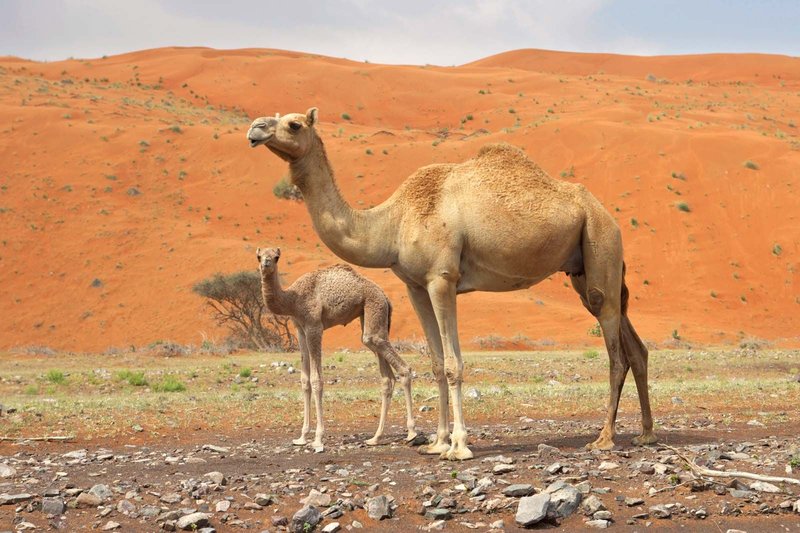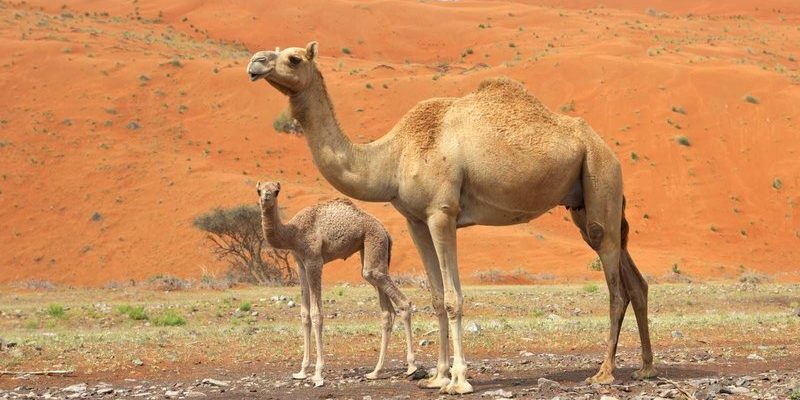
From ancient tales to modern-day art, the dromedary has made its mark in various cultural narratives. You might be surprised at how often this majestic animal appears, often carrying stories of travel, trade, and endurance. So, if you’ve ever wondered about the dromedary’s role in folklore and culture, get comfy, and let’s dive into the fascinating world of this remarkable beast.
The Dromedary in Ancient Civilizations
Throughout history, the dromedary has been a symbol of strength and resilience. In ancient Egypt, these animals were revered for their ability to traverse vast deserts, making them crucial for trade. Picture this: merchants riding on the backs of dromedaries, laden with goods, crossing the Sahara Desert. These journeys were not just physically demanding but also infused with stories that became part of the cultural fabric.
In Mesopotamia, dromedaries were often featured in myths and stories. They symbolized wealth and prosperity, appearing in tales where they served as gifts from gods. You might find it interesting that some ancient texts describe dromedaries as the carriers of royalty, which illustrates how these animals were integrated into the life and beliefs of the time.
Folklore and Legends Featuring Dromedaries
Many cultures have woven the dromedary into their folklore, creating legends that highlight its unique traits. For example, in Middle Eastern stories, the dromedary is often depicted as a wise and patient creature. There’s a famous folk tale where a clever dromedary outsmarts a greedy merchant. This tale serves as a moral lesson about wisdom and the importance of not underestimating the seemingly simple.
In South Asian folklore, dromedaries are seen as loyal companions. They are often portrayed in stories about travelers who, despite facing harsh conditions, rely on their trusty dromedary to carry them to safety. These narratives convey themes of friendship and loyalty, emphasizing that sometimes, the most humble companions can become heroes in challenging times.
Dromedaries in Modern Art and Literature
Fast forward to today, and the dromedary still holds a significant place in art and literature. Artists often depict these camels in various forms, from traditional paintings to modern sculptures. Their stature and grace make them a favorite subject for many. Imagine walking through an art gallery, coming across a stunning piece that showcases the dromedary against a backdrop of swirling desert sands. It’s not just about the animal; it’s about the stories and emotions they evoke.
In literature, dromedaries play roles in both children’s books and adult novels. They can symbolize adventure, as in stories where explorers journey into unknown territories, or represent home and comfort, reminding readers of warmer climates and cultural roots. You might have encountered a dromedary in tales of migration or survival, where its presence signifies hope.
The Dromedary as a Cultural Symbol
Beyond stories, the dromedary embodies various cultural values. For many Bedouin tribes, it represents resilience and adaptability, key traits needed to survive in harsh environments. These communities rely on dromedaries for transportation, milk, and even meat, making it a vital part of their daily lives. It’s fascinating to think about how intertwined the lives of these people are with their camels.
In some cultures, the dromedary also symbolizes hospitality. When visitors arrive, a tribe may welcome them with a feast and rides on dromedaries, showcasing their significance in social gatherings. This custom highlights the idea that sharing a connection with these animals is also about sharing experiences and building relationships within a community.
Influence of Dromedaries in Popular Culture
Modern popular culture has embraced the dromedary in various ways, too. From movies to advertising, you might have noticed dromedaries bringing a sense of adventure or exoticism to the screen. Think about scenes in films where characters traverse deserts on these magnificent creatures, underscoring themes of exploration and survival.
Moreover, the dromedary has made its way into merchandise and branding, often symbolizing quality and endurance. Businesses sometimes use the imagery of a sturdy dromedary to convey reliability and strength, resonating with consumers who value these traits. It’s interesting how an animal can bridge traditional culture and modern marketing.
The Role of Dromedaries in Today’s Society
Today, dromedaries play vital roles not just in their native lands but also in global discussions about climate adaptation and sustainable practices. Their ability to thrive in extreme conditions makes them symbols of resilience against climate change. You might find initiatives promoting the use of dromedaries for eco-friendly tourism, taking advantage of their natural ability to traverse tough terrains without harming the environment.
Furthermore, in recent years, efforts have been made to raise awareness about the welfare of dromedaries, especially in tourism. Ensuring these animals are well cared for is crucial as their cultural significance continues to evolve. Supporting local initiatives that prioritize the health and well-being of dromedaries can make a real difference.
The dromedary is more than just a camel; it’s a rich symbol of culture, history, and resilience. Across centuries and civilizations, this remarkable creature has inspired countless stories, art forms, and cultural practices. Whether seen as a companion, a method of transport, or a symbol of survival, the dromedary reminds us of the deep connections between animals and humans.
So, the next time you think of a dromedary, consider the weight of its legacy. It’s a living testament to the ways cultures have shaped and been shaped by their relationship with the natural world. Embracing this bond enriches our understanding of history and reminds us of the resilience present not only in the dromedary but also in ourselves.

